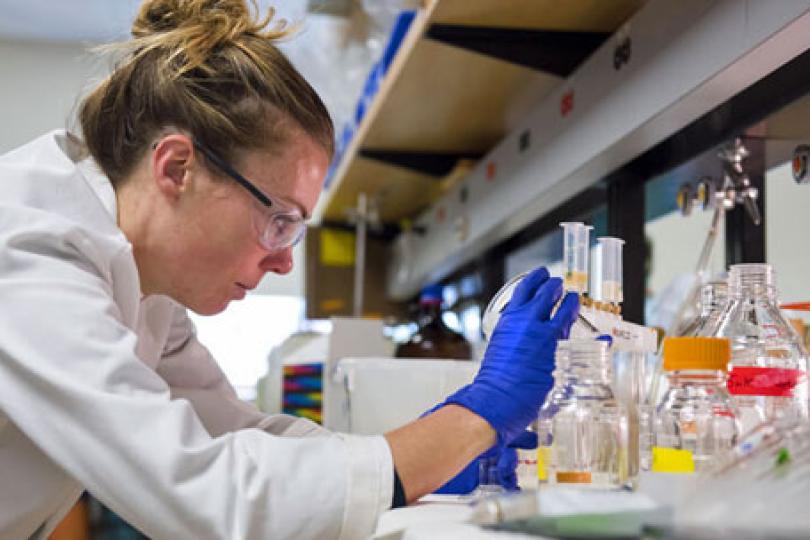Kimberley Rain Miner: Preparing for the disasters we never saw coming
Is it possible to identify and stop a climate change disaster before it happens?
Kimberley Rain Miner, a National Science Foundation Fellow and Department of Defense SMART Scholar, believes it might be with the proper predictions and preparations in a broad range of scenarios.
With her dissertation work at the University of Maine, which she completed this year, Miner was looking for a way to explore unseen or unexplored climate change risk. She was drawn to glacial meltwater, since it is perceived as the cleanest water in the world, safely stored in isolated locations and frozen for centuries. Miner set out to challenge these assumptions and to show that glacial meltwater, which is increasingly entering watersheds because of abrupt climate change, is in fact a disaster waiting to happen.
Miner looked at glaciers that trapped now-banned pollutants (like DDT) that fell on them in the form of precipitation starting in 1950. She developed a risk assessment model for how those pollutants might be re-released now, due to recent abrupt climate change increasing the melt rate of these glaciers and introducing the toxins to watersheds far from their original source. Miner found the re-emergence of these secondary pollutants into ecosystems could wreak on native flora and fauna, and that local inhabitants are unprepared for the possible resulting changes in their health and livelihoods.
Originally, Miner says, she got some pushback from her dissertation committee members, who thought the impacts she found would be small “background numbers”. However, she was able to show that under certain scenarios, there is augmentation of pollutants to the point where the risk to watersheds, for example when people are eating fish from watersheds, is potentially dramatic.
This is exactly the obscure side effect of climate change that interests Miner. She says, “We’re already talking about the effects of losing a steady stream of water from the glaciers, but the secondary effect of pollutants being reintroduced into a watershed? That topic isn’t even being discussed.”
All of her research so far has been on glaciers in the northern hemisphere. Now she is concerned about places like Peru or Chile, which could be more broadly affected. Her connection to the Switzer Network pushed her to also think about the environmental justice context of her research, and to make sure people who need the information she has found are getting access to it.
Now that Miner has completed her dissertation, she is taking her skills and applying them as a Physical Scientist at the Geospatial Research Lab of the US Department of Defense and Research Assistant .Professor at the University of Maine Climate Change Institute There she explores food and water security issues internationally wherever the US Army works. This work is critical to understanding how fluctuations in food and water availability might affect regions where the United States has interests and troops, and helps the military prepare ahead of time. She is part of a team identifying risks to service members on the ground and their mission objectives as a result of food and water insecurity affecting government and community stability.

